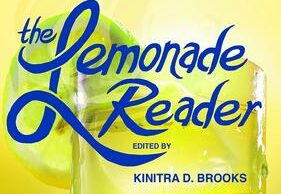Mothers, Children, and Holy Violence: Who’s at Fault?
On December 28, 2010 the state of Indiana filed suit against Latisha Lawson. Lawson, a 31 year-old African American mother of two residing in Fort Wayne, Indiana, was charged with forcing a concoction of oil and vinegar down the throats of her daughter, Kierra King (K.K.), 10, and son, Jezaih King (J.K.), 3, in an effort to exorcise them in November 2009. According to court documents, K.K. vomited Lawson’s holy brew while J.K.’s mouth was forcibly held shut for 10 minutes, in order to ensure consumption. After three attempts J.K. died.
K.K. reports that her younger brother’s lifeless body was then laid on a bed for viewing for an unknown period of time. She was made to say goodbye, and pray over him. After which, J.K.’s body was placed in a closet located inside of their apartment. Eventually, Lawson and K.K. moved. J.K.’s body was then placed in a plastic tote, which remained with them.
After receiving a missing persons report from Lawson’s mother, who had not seen Lawson or the children in two years, officers from the Fort Wayne Police Department located Lawson at a local homeless shelter. When asked about J.K., she initially stated that he was staying with a relative. However, when pressed further, Lawson admitted that her son was dead and that he had “gone on to be with God.” She was charged with three counts of neglect of a dependent and two counts of battery.
For many this story highlights a tragic, yet familiar, case of religious fanaticism gone terribly wrong. Somewhere along the way, you’ve read, watched, and/or heard about this storyline before: crazy mother abuses child(ren). The actors differ. However, the underlying thesis remains somewhat the same: bad mothers do bad things. Add religion, race, singleness, and poverty to the mix and the plot thickens even further.
Anyone remember “Alice,” “Nyla” and “Tangie’s” mother, played by Whoopi Goldberg, in Tyler Perry’s troubling rendition of For Colored Girls? Sure, her role was a play on the 1976 cult classic, Carrie and was thus little more than a blackening of “Margaret White,” “Carrie’s” mother, played by Piper Laurie. Each were as far off kilter as the other and both stopped at nothing, including violence, to save the souls of their daughters. However, “Alice” differs from “Margaret” in one way: she invokes a multiplicity of stereotypes about black women and bad mothering—none of which interpret black mothers as humans impacted by not only history but also complex contemporary contexts whose force causes systemic trauma that often go unchallenged, thus limiting their ability to thrive.
The reproduction of these kinds of images makes it difficult to see the multiple aspects of these women’s stories. Unfortunately, their complex narratives get lost beneath the monstrosity of their caricatures. Why not? They’ve harmed their children. Clearly, fault lines point in their heartless and immoral direction. However, this reading is way too simplistic. It is too eager to point the finger at and remedy the symptoms and too slow to attend to the problem(s).
A closer look at Lawson’s story reveals a web of fault lines, which point to a hodgepodge of social cultural factors, including but not limited to unequal access to material and institutional resources, opportunities, and support networks like healthcare and legal rights and rites that enable social acceptance and human flourishing.
Let me be clear: I am not attempting to dismiss or marginalize the violence committed against either K.K. or J.K. Both children clearly suffered at the hands of their mother. This alone makes the hair on my skin rise. As a mother who loves her children fiercely, yet knows what it means to stand beneath the hand of violence, including harmful religious ideology, my heart aches for both K.K. and J.K. However, knowing what I know about the history and experiences of single black mothers in this country makes me see Lawson’s act of violence against her children, specifically the deployment of what I call “holy violence,” as a coping mechanism, albeit deeply problematic, against several sources of violence, which began long before and extend way beyond the vicious act narrated in this particular story.
What Lawson did was evil. However, she did not act alone. Lawson acted in concert with her context. Thus, both are to blame. We cannot ignore the role that society plays in creating a context where desperate and violent decisions are made and unhealthy religious ideologies are mass-produced, maintained, circulated and subscribed to just as we cannot close our eyes to Lawson’s murder of J.K. and violence against K.K.
Religion is one way that many single black mothers make sense of their reality. Imagine having rights on paper, yet lacking the social position to exercise those rights. Oft times, faith traditions and communities are the only places where they might find meaning, value and semi-community. Unfortunately, many of these traditions and communities are often simultaneously life giving and death dealing. Many have bad theologies, which place emphasis on individual evil over and above systemic evil. It’s easier. Why spend (and risk) life attempting to resist the pervasive power of structural injustices such as racism, classism, sexism, etc. when you can just place blame (and ultimately release rage) on a defenseless lone soul?
In this way, J.K. becomes the scapegoat, however, so does his mother. Both got a raw deal (as did K.K.). Lawson was left to parent children alone in a society that violently abused her as she simultaneously viciously attacked her children. However, while she will be punished, the imperial structures that gave shape to both her context and decision-making will carry on without penalty. Alas, the symptoms will be remedied!
In the end, Lawson will be confined to a cell—much like the closet where she placed J.K.’s corpse. Unlike her son, she will be among the living…




1 Comment